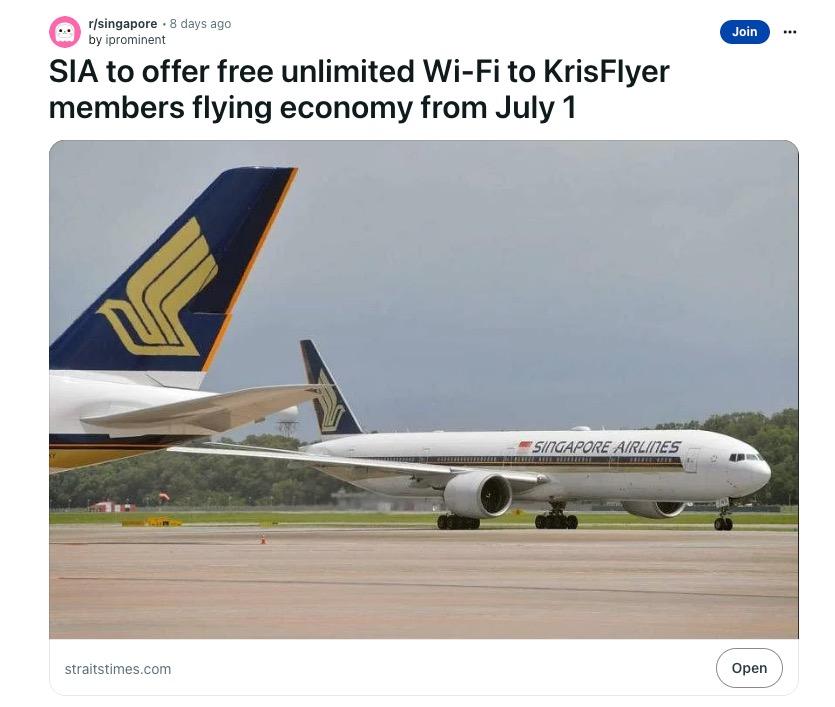
1 minute read
SIA’S IN-FLIGHT DINING EXPERIENCE AND UNLIMITED FREE WI-FI
Image Credits: Mothership
Singapore Airlines (SIA) recently faced backlash regarding its lacklustre dining experience, which failed to meet the expectations set by its “World Class” branding. Considering the feedback, SIA decided to shelve plans for paper-based serviceware and reintroduce certain food items that were previously removed due to operational and supply chain constraints caused by the pandemic.
Advertisement

In line with their commitment to enhancing the brand experience, the airline also announced that starting from July 1st, they will provide unlimited free Wi-Fi to all passengers across cabin classes. To access this benefit, passengers simply need to be members of the airline’s KrisFlyer frequent flyer programme. This upgrade will replace the current limited hours of complimentary in-flight Wi-Fi offered to economy and premium economy class passengers.
These developments raise an important question that is of great interest to marketers – what does it take to build a premium travel brand?
Functional offerings certainly play a role in enriching the brand experience, but they are not the exclusive driving force behind brandbuilding endeavours. The development of a brand's image and the establishment of customer expectations depend on a harmonious blend of functional advantages and intangible emotional elements.
In the case of SIA, its branding through campaigns such as "Singapore Girl" and “World Class” emphasise its reputation for exceptional service, luxurious travel experiences, and a commitment to customer satisfaction. These elements go beyond functional offerings like inflight amenities and focus on evoking emotions of comfort, elegance, and reliability.
Ultimately, airlines like SIA need an image that elevates the experience emotionally; and an experience that delivers on the image functionally.




